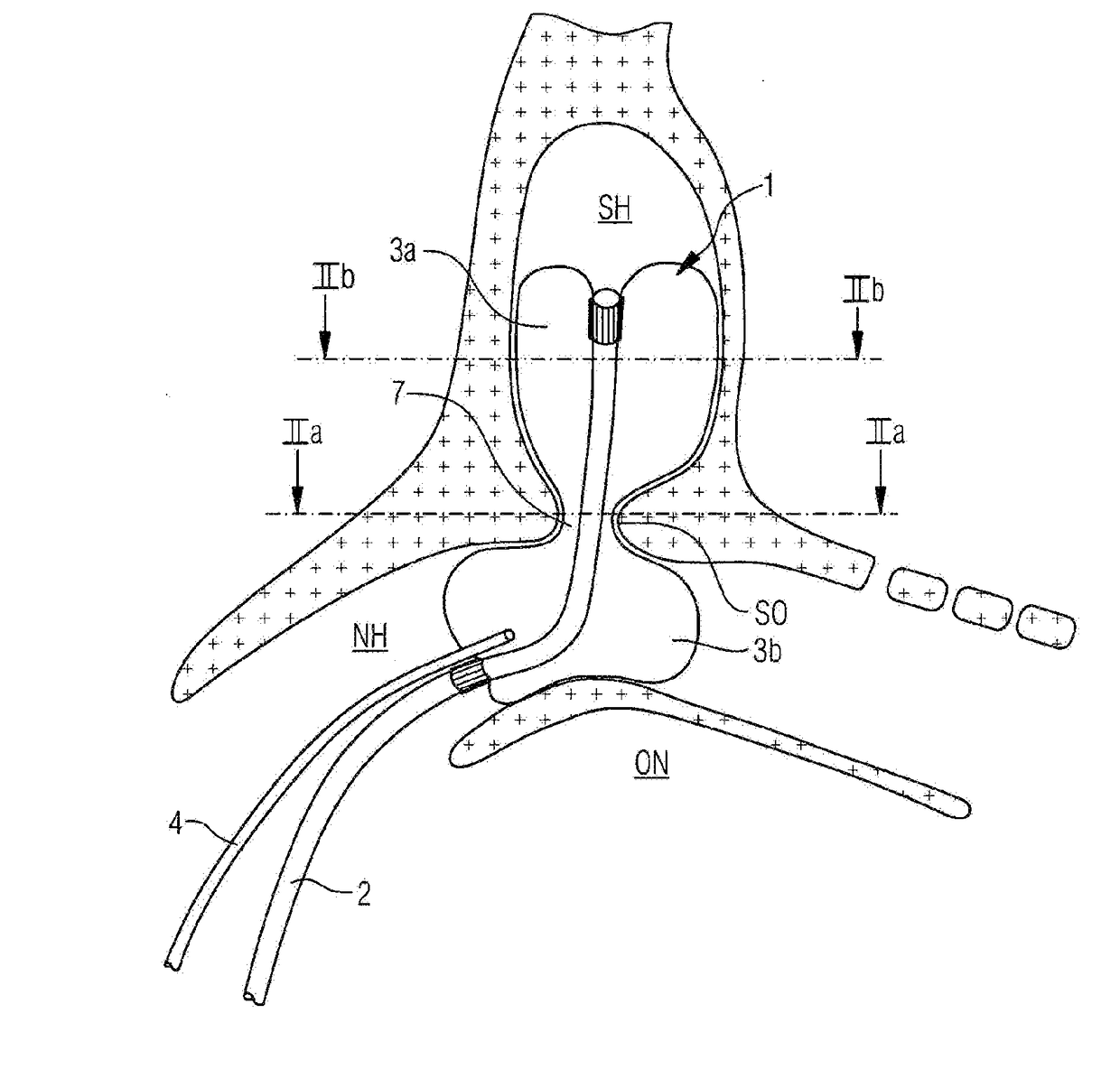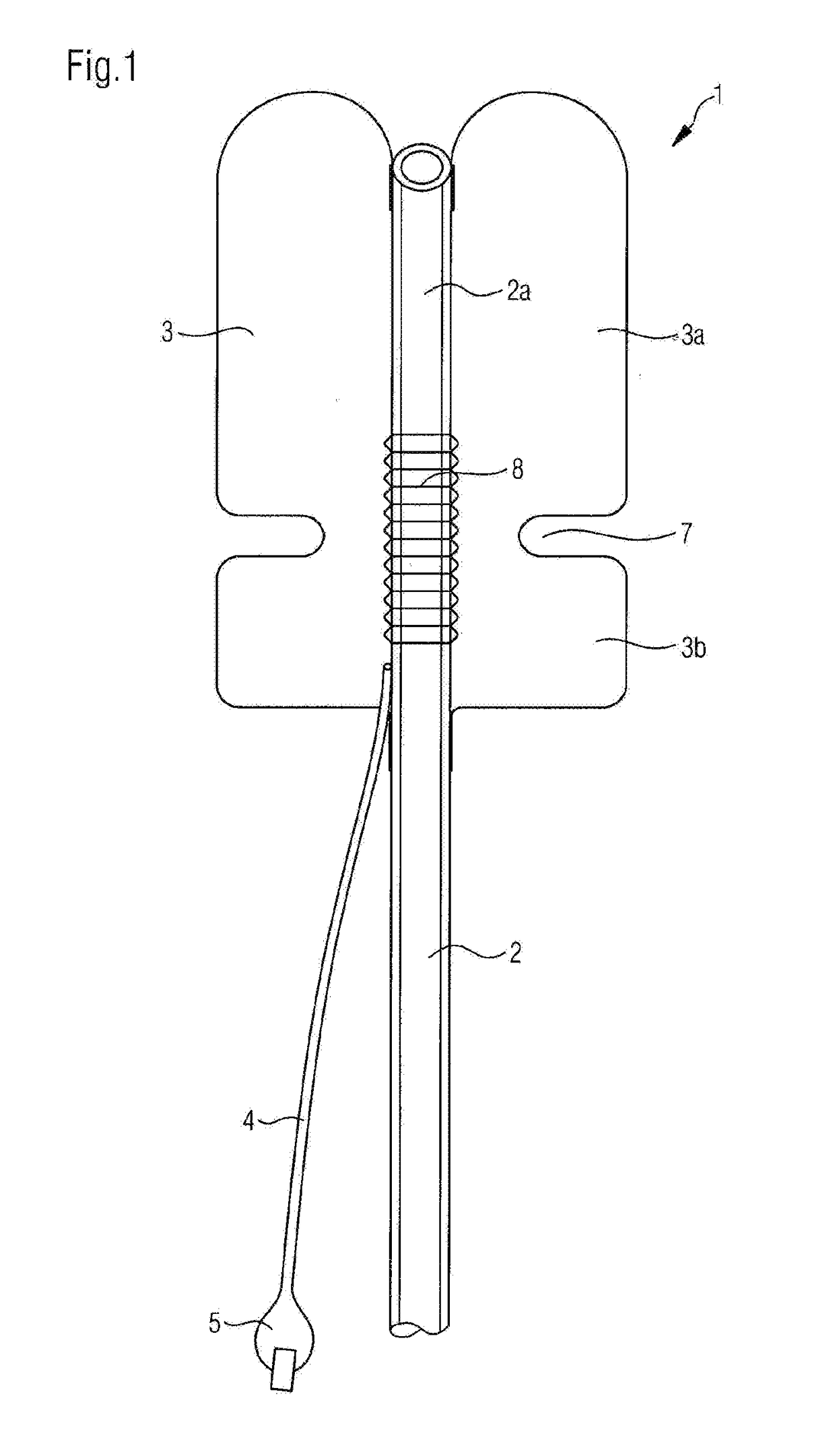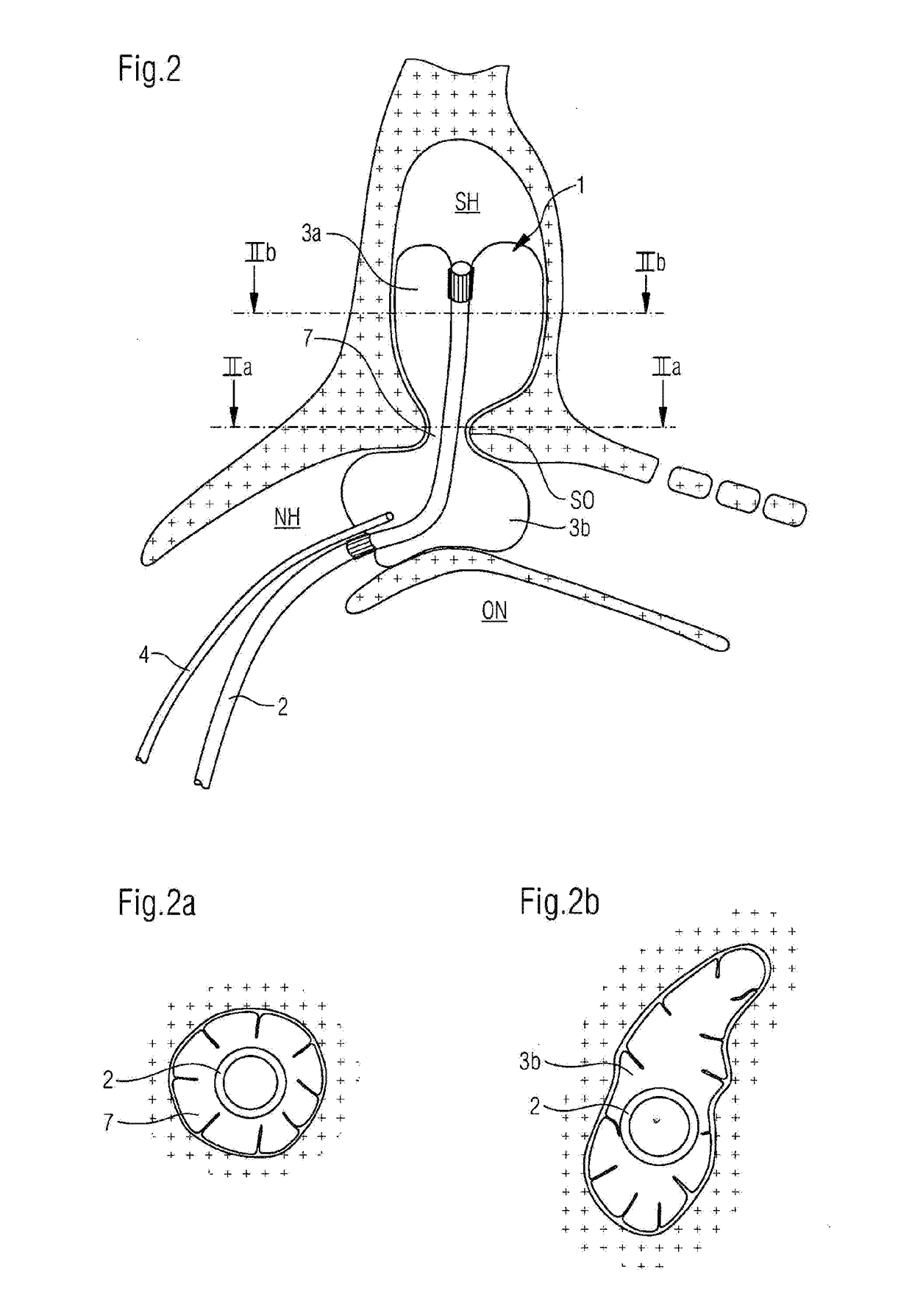Tamponade for nasal cavities or sinus cavities
a technology for nasal cavities and sinus cavities, applied in the field of tamponade for nasal cavities or sinus cavities, can solve the problems of excessive regeneration or granulation of tissue, pain associated with the removal of tamponading material and the bleeding that often accompanies, and the inability of the balloon to rest flat, so as to achieve the effect of preventing permanent pressure spikes on prominent structures
- Summary
- Abstract
- Description
- Claims
- Application Information
AI Technical Summary
Benefits of technology
Problems solved by technology
Method used
Image
Examples
Embodiment Construction
[0020]Further features, details, advantages and effects based on the invention are apparent from the following description of preferred embodiments of the invention and on the basis of the drawing, in which the functional and design principle of the tamponade according to the invention are explained in greater detail. The following is shown:
[0021]FIG. 1 an example of a freely unfolded tamponade body;
[0022]FIG. 2 an example of a tamponade body as in that has been inserted into a frontal sinus and charged with filling pressure;
[0023]FIG. 2a a cross-section tamponade body in the vicinity of the ostium;
[0024]FIG. 2b ion of the inserted tamponade in the vicinity the frontal sinus cavity;
[0025]FIG. 3 an embodiment of the tamponade with a residually elongated sinus cavity segment in situ, with the folded and compressed space-filling development of the balloon body that fills up the sinus cavities;
[0026]FIG. 4 an embodiment based on FIG. 1 with a front balloon body that is partially folded ...
PUM
 Login to View More
Login to View More Abstract
Description
Claims
Application Information
 Login to View More
Login to View More - R&D Engineer
- R&D Manager
- IP Professional
- Industry Leading Data Capabilities
- Powerful AI technology
- Patent DNA Extraction
Browse by: Latest US Patents, China's latest patents, Technical Efficacy Thesaurus, Application Domain, Technology Topic, Popular Technical Reports.
© 2024 PatSnap. All rights reserved.Legal|Privacy policy|Modern Slavery Act Transparency Statement|Sitemap|About US| Contact US: help@patsnap.com










